With Dr Carla van Laar AThR
Image credits Carla van Laar
In this article, I introduce some of the ways that “life enhancement” has been understood and written about in art therapy literature, and what I discovered about “life enhancement” myself through my own Doctoral research.
I then invite you to engage with a tree as a way of finding your own poetic metaphors and understandings of what is life enhancing, nourishing and sustaining for you in your very own life.
…
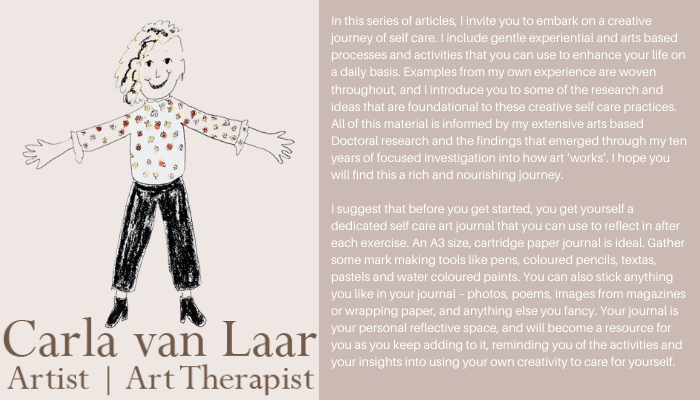
…
Knowing Yourself and what Enhances Your Life
“Life” can refer to the animated ways in which we grow, metabolise, reproduce and adapt, or the state of being human – our very existence, our own biography, or principles that are vivifying and quickening, that keep us alive (life, n.d.). To “enhance” life would mean to intensify and magnify life, raising it to a higher degree, and make life more valuable (enhance, n.d.). The notion of “life enhancement” signifies that, through certain activities, processes and experiences, the value and quality of life can be enriched. This can be thought of as “quality of life” and is often written about using terms such as “health” and “wellbeing”. The World Health Organisation highlights that “health is a state of complete physical, mental and social wellbeing and not merely the absence of disease or infirmity” (World Health Organisation, n.d.).
… Authors in the fields of art therapy and arts and health have linked life enhancement, health and wellbeing with access to and participation in art based activities (McNiff, 2016; Slayton, D’Archer & Kaplan, 2010; Daykin & Joss, 2016; Binnie, Dudley, Quiroga & Rampling, 2013). Some take a broad philosophical view, others focus on outcomes, and some look more closely at experiences of life enhancement by attending to the qualities of peoples’ lived experiencing. McNiff (2016) has offered an expansive perspective – that when we engage in art based practices we participate in the creative life energy of the universe, and that this energetic flow is the basis of all healing. Many published studies look specifically for evidence of reduction in unwanted symptoms such as anxiety or isolation, and increases in protective factors or wanted states such as relaxation or cooperative behaviour (Slayton, D’Archer & Kaplan, 2010). The evidence is scarce, as I have mentioned. Daykin and Joss (2016) have responded to the perceived need for an evidence base in art based practice by offering a framework for evaluating arts projects for health and wellbeing. This framework (Daykin & Joss, 2016) focuses on how target groups’ needs are assessed, ways to identify appropriate outcome measures- such as participation, mental wellbeing and observed behaviour – and also ways to evaluate art program processes and impacts using quantitative and qualitative methods. Rather than focusing exclusively on outcomes for participants, this framework encourages reflection on the qualities of processes in art based programs. Binnie (2013) expanded on traditional approaches to generating evidence of the links between art and wellbeing. She was particularly interested in links between seeing artworks and wellbeing, and asked the question, “Does viewing art in the museum reduce anxiety and improve wellbeing?” (Binnie, 2013, p. 191). While this question reflects the dominant practice of looking for evidence of reduced symptoms and increased health, in her discussion, Binnie (2013) highlights that:
Improvements of positive affect, which boost mental wellbeing in general, can also improve cognitive processes such as problem solving and social interaction (Ashby et al., 1999). This could suggest that positive reactions to the experience of viewing art in a museum could also be longer lasting than instances of a change in mood. (p. 192)
In this passage, Binnie alludes to the idea that seeing artworks can have ripple effects that are ongoing and life enhancing, that somehow enrich quality of life for the viewers. Unlike “outcomes”, “qualities” that enhance life are, at the least, difficult to quantify, and are perhaps even unquantifiable. These kinds of life enhancing “qualities” are experienced rather than observed and can be best understood through first hand description rather than measurement. Catherine Hyland Moon (2002) implores art therapists to make use of artistic and poetic language for conveying art based experiences. She says:
Poetic language draws the listener in, inviting empathic participation in that which is being described, and inviting authentic response. These qualities of poetic language offer potential antidotes for the problematic characteristics of the dominant discourse in medical and mental health, and a balancing effect for the medical model’s detached, diagnostic language for interpreting human behaviour. (C. H. Moon, 2002, p. 270)
I see this distinction as crucial for the field of art therapy.
(van Laar, 2020)
Knowing Yourself and What Enhances Your Life – “If I were a Tree”.
In this exercise, I invite you to work with the poetic metaphor of a tree to connect with, explore and represent your own unique understandings about the things that keep you strong, give you enjoyment, capture your interest, motivate you to keep going, and provide you with hope.
Artists and Arts Therapists, including myself, around the world have worked with the metaphor of the tree as a symbol of life, healing and growth for centuries, however, in this exercise I draw inspiration from Kim Billington’s (2021, pp. 193 – 203) work.
…
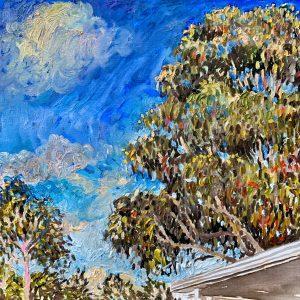
Meeting a tree
I would like to invite you to take a walk outside and find a tree to spend some time with.
Take your time finding a tree, you will notice when you have found one that you can relate to because it will feel right.
When you have found one, stand back and try to take in the whole tree. Look at in until you can visualise it in your mind’s eye, then close your eyes and feel into the qualities of the tree.
Imagine the roots down in the earth that bring nourishment to the tree, and keeping it grounded and stable.
Open your eyes and go close to the tree now. Notice the soil at its base. You might like to take off your shoes and socks, or touch the soil with your hands. Notice what it is like to touch the ground, and the replenishing qualities of the earth.
Place your hands on the trunk of the tree. Feel the texture of the bark. Can you lean on the trunk? Does it support you? Can you feel the strength of the trunk?
Look up now, at the branches of the tree. Notice how they reach out and up, how they grow towards the light, and how they provide safe homes for animals and places to rest. What message do they have for you?
And now, focus your attention on the leaves of the tree. They provide shelter and shade, they respond to the wind and breezes, creating movement. Notice the green parts of the leaves that create oxygen in the air for us to breathe. You might like to thank the beautiful tree for creating the air that is needed to sustain your life.
Close your eyes again for a moment. Take some time to tune in to the tree and use your imagination to ask it if it has any important message for you today. Listen with your whole body and all of your senses. Tune in to everything that you can see behind your eyelids, hear through your ears, smell with your nostrils, feel with your skin and taste in your mouth.
In your mind’s eye, start to imagine yourself as a tree, with your feet firmly planted in the ground beneath, receiving nutrients from the earth, with a supportive trunk, and with branches that reach out and up, and with leaves that dance and shimmer and provide clean fresh air to sustain life. Enjoy this experience for as long as you like.
Creating an image of myself as a tree
When you return home, take out some art materials and a nice big piece of paper, or a fresh page in your journal if you don’t have a large piece of paper.
You might like to begin by using charcoal, as it is a burnt piece of wood that came from a tree.
You might also like to have a selection of materials – use whatever feels right for you today. Paint, coloured pastels, markers and collage are all options.
When you are all set up, take a moment to reconnect with your experience of imagining yourself as a tree. Close your eyes and feel it with your whole entire body. Breathe into the feeling until it becomes an energy that moves you towards your art materials.
Use your materials to create an image of yourself as a tree on the paper. Feel into the movements that your body wants to make as you continue making marks. Notice the colours you are attracted to, and how the image on the page can tell you what it needs you to add next. Don’t worry if you don’t know exactly how it will turn out, or even if it looks different to how you imagined or wanted. The art work you are creating will have new things to tell you.
Keep going with the process of creating an image of yourself as a tree for as long as you like until you feel finished.
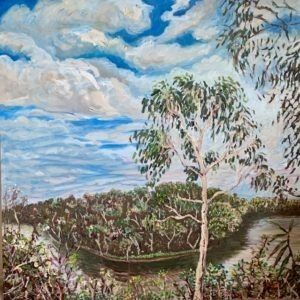
…
Questions for reflective journaling
- What was it like to paint yourself as a tree? Can you describe the process?
- Now, looking at your tree, what do you notice about the roots of your tree, and the ground around you? Are there any important messages here about what nourishes you in your life, and what keeps you grounded and stable?
- What do you notice about the trunk of your tree? Does it tell you anything about what supports you and keeps you strong in your life?
- What do you notice about the branches of your tree? Do they have anything to tell you about what you are reaching for and growing towards? Do they communicate anything about how you can make safe spaces within yourself for all the different parts of you?
- What do you notice about the leaves? How do they dance together? What are they creating that sustains your life?
- Is there anything else that your tree wants to tell you today? You can ask it in your imagination and just listen with openness for an answer. If you receive one, just accept it, even if you don’t fully understand what it means. Be open to possibilities and to surprises.
…
References
Billington, K. (2021). A Counsellor’s Companion: Creative Adventures for Child Counsellors, Parents and Teachers. Australia: Ultimate World Publishing.
van Laar, C. Seeing Her Stories. Carlavanlaar.com, Brunswick, Australia.
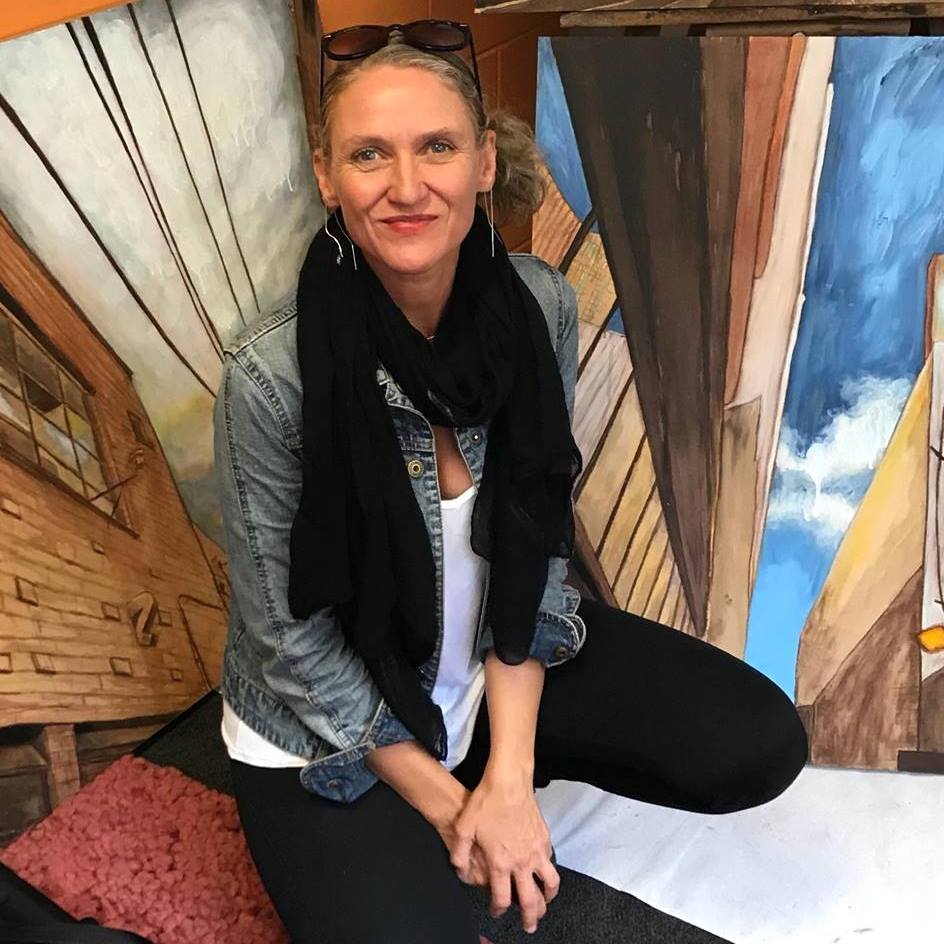
Dr Carla van Laar
Artist | Art Therapist
Master of Creative Arts Therapy
Doctor of Therapeutic Arts Practice
Registered Supervisor and Professional Member ANZACATA
Carla van Laar is a painter and therapeutic arts practitioner from Australia. Born in Brisbane, Carla is first generation Australian on her Dutch grandparents side, and 7th generation through her maternal bloodline who were mostly English and came to Australia in the early colonisation of the 1800s. Carla currently lives and works in Victoria, residing between Wurrundjeri country in Melbourne, and Boon Wurrung country in Inverloch, paying deep respects to the First Peoples of the Kulin Nations whose land was never ceded and will always be Aboriginal land. Identifying as a cisgender woman, Carla is passionately disinterested in socially constructed identities that disempower anyone. Carla has over 25 years’ experience working with people and the arts for health and well-being in community organisations, justice, health and education contexts.
Carla’s first book “Bereaved Mother’s Heart” was published in 2007 and broke social taboos about maternal grief. From 2008-18 she established and ran an independent art therapy studio and gallery in Melbourne. Her Doctoral research “Seeing Her Stories” continues the mission to make women’s stories visible, through art.
Carla has lectured and supervised Art Therapy students at RMIT, MIECAT and currently the IKON Institute. She is a practicing artist and in 2018 received an Artist Fellowship at RMIT’s creative research lab, “Creative Agency”. She insists on being part of a creative revolution in which art re-embodies lived experience, brings us to our senses, makes us aware of the interconnectedness of all life and is an agent of social change.
Carla’s new book “Seeing her stories” presents her research into making unseen stories visible through art, and is available to read for free online here or purchase a hard copy of the full colour hard cover coffee table book here.
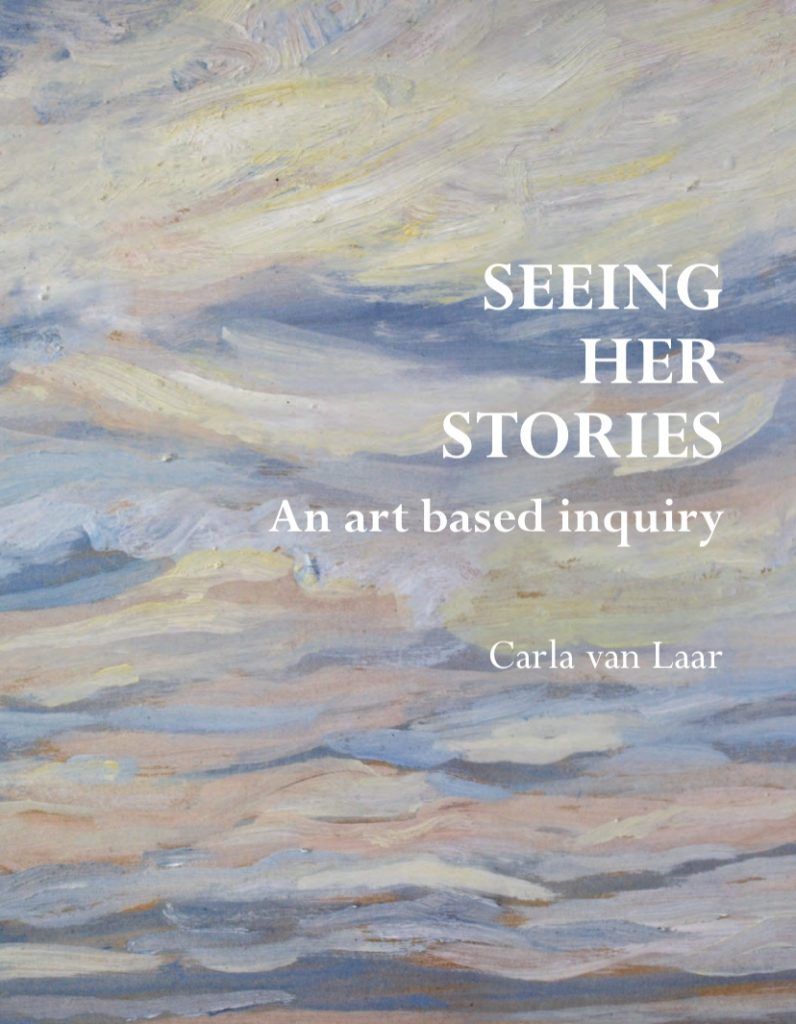


Leave a Reply